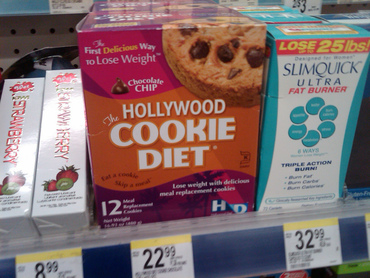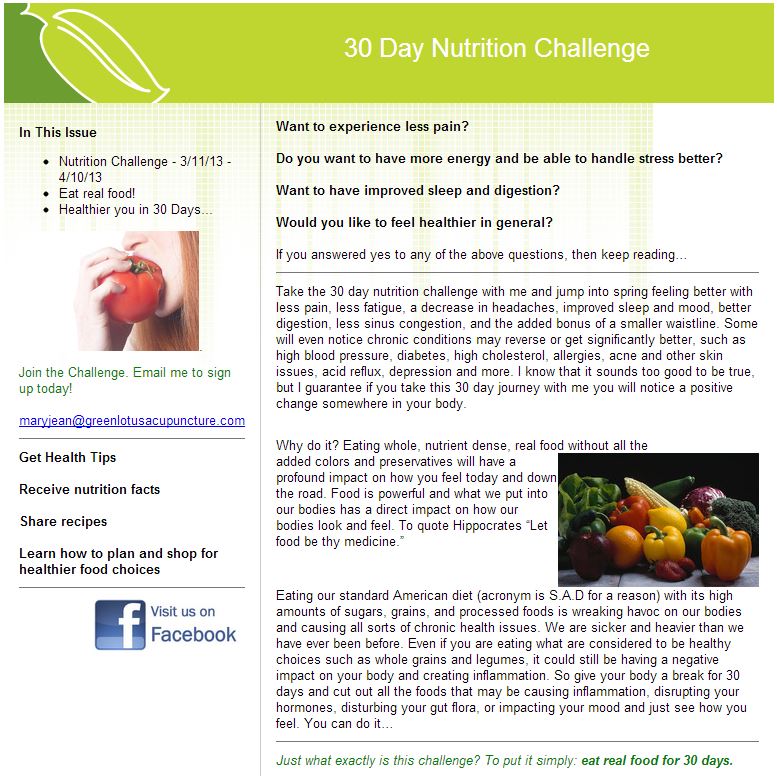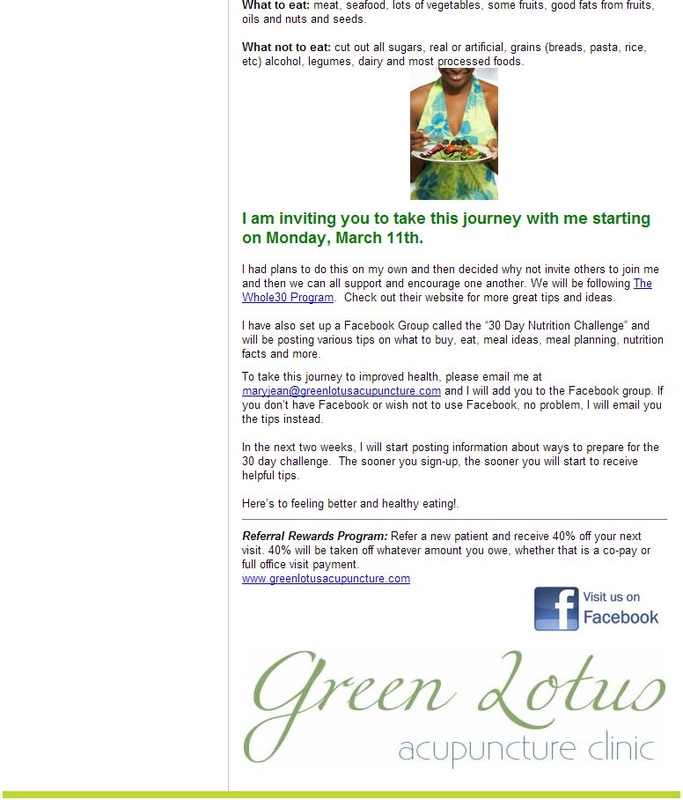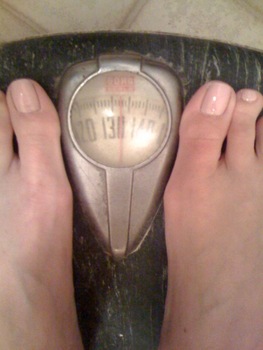 So back in my "Nutrition 101" days of my Naturopathic medical education, I learned the commonly taught old school nutrition idea of: "weight loss = more calories burnt than consumed" So that's it, huh? Eat less calories, burn more calories and weight loss will be a sure thing? Well, most of us know it's just not that easy. In fact, many find that they gain weight during and after dieting, even if they increase their activity level. So what's going on?! The fact of the matter is, only 1 in 6 dieters keeping the weight off (after a year). So why can't we all just follow that easy formula and lose those extra pounds?! ...because it just isn't so simple. We are a little more complex than calorie consuming and burning machines (but you probably knew that already). An article published last week in the Journal of the American Medical Association provides a little insight into some of those dieting and weight loss complexities. The publishing authors looked at overweight research participant using three different diet and weight loss programs and measured their success. The three diets were low-fat, low glycemic and low carbohydrate (high protein). Under carefully monitored in-patient hospital settings, the low glycemic dieters burned an average of 200 calories per day more than the low fat. The low carbohydrate dieters lost 300 calories more per day than the low fat dieters but saw an increase in blood levels of inflammatory markers (cortisol and CRP). So what does this all mean?! Just follow the diet where people burned the most calories while being constantly monitored in the hospital? Well, that doesn't sound like a very enjoyable diet program to me. If you're considering a weight loss-focused diet and exercise program, think about getting an expert involved to guide your path to success. If you haven't heard by now, my past 'slim down & happy up' program sessions have provided women (& men) with guided, individualized meal planning, diet guidelines and exercise recommendations. Combined with unique natural formulas that I craft specifically to each participant, this really is my all-in-one tool to address weight loss and stress reduction for long-term success. Registration for our next session opens Monday, August 19th, full details here. Join us for 3 months, and just see what a profound impact you and I can have on your health and quality of life!
0 Comments
There are so, so many things that I despise about all the popular nationally-known diets. If it involves meal replacement shakes, points or counting anything, I probably hate it.
From ‘slim down & happy up”: A lot of well-known weight loss programs have good intentions but poor execution. A calorie restricted diet is a common strategy. Calories in, calories out, right? We just get you to eat less and work out more, and the pounds will fly right off, right? Nope. It’s not that simple. So let’s highlight one very popular weight loss strategy: portion control. Blech. Even saying “portion control” makes me uncontrollably contort my face like these kiddos (except the yogurt girl; I’m pretty sure I’ve never looked that cute). “But, Dr. Angela, shouldn’t you be all for portion control since you help women lose weight?” You would think, but no, no I’m not. Because food selectivity is much more important than portion control. While helping women lose weight through slim down & happy up, we talk so very much about our food choices, and leave grams, calories and servings to those other guys. I actually find that both slender and overweight women alike tend to under-eat- I more commonly advise women to eat more food rather than to scale it back. We should be more mindful of what you’re eating, and less about how much. Women in ‘slim down & happy up’ eat until they are full, breakfast, lunch and dinner. And how is that? How am I assisting in weight loss without counting calories, points or replacing meals with shakes? Well, that takes a while to explain. Five weeks, to be exact. Never fear, registration is now open for the next session of ‘slim down & happy up.’ We’re starting June 27th, so you’ll have to get on board before then! Oh, and to get a private discount code for this current session, sign up above to get on my contact list. Here’s to eating to your fill, Yep, I’m anti-grazing. “I need to eat every 2 hours, or I just faint, get grouchy, become homicidal, start eating dirt, etc.” I’ve heard it countless times. I used to say it myself. But where did we ever get the idea that that was normal? Let alone healthy? Feeling like you will pass out or go crazy if you don’t eat every two hours is not healthy. I don’t let that slide. Why? Why do I care so much because you eat kale and grass-fed lamb and organic walnuts every two hours? Because I care about you and your hormones. Yes, it’s back to hormones again. This time, those responsible for the endless grazing cycle loop are insulin and cortisol (and also a dozen other digestive hormones and other neurochemicals). A major part of the grazing addiction is blood sugar instability. Blood sugar roller coasters, lead to off-the-wall insulin responses and set you up to need to graze constantly. A stable, healthier blood sugar response, on the other hand, allows for the best use of calories, including fat burning. That means grazing (and their wacky blood sugar patterns) can actually lead to weight gain- the very thing that grazers often are trying to avoid! As I explain it in ‘slim down & happy up’: insulin excess + insulin spikes = belly fat Guess what else happens when blood sugar responses go from crazy-roller-coaster to nice-and-smooth? Stress goes down because cortisol (the stress hormone) will decline naturally. Wanna learn how to break the grazing cycle and reduce stress? An added bonus just might be losing a little belly fat in the process. Registration is now open for ‘slim down & happy up,’ my way to target weight loss through stress reduction (and get those pesky hormones under control for once!)- so sign up now while you still have time. If you aren’t already on my contact list, sign up and receive a private discount code for this current session. We begin in a few weeks- don’t get left behind! Here’s to helping you de-stress, 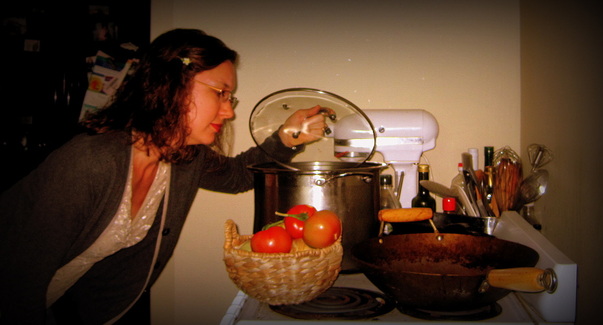 cook smarter, stress less ...you gotta eat, so why not upgrade your kitchen time? do you... ...struggle with trying to cook homemade food without spending all your time in the kitchen? ...stare into your fridge for long minutes, with only mustard and bare shelves staring back at you? ...want to eat healthier lunches at work, but never cook ahead of time, so you end up eating out more often than you'd like to admit? (warning sign #1: the fast food clerk knows your name and order) if so, then join Dr. Angela on this free 3 day workshop and find out how to... ...structure your kitchen time for minimal prep and maximal meal production ...eat better, cook smarter and stress less over your food choices ...learn how to keep your fridge stocked with healthy meals and snacks ...and get a few bonus recipes to help you get started, now! join me from the comfort of your pjs Register for the workshop now (it takes 2 seconds), then sit back and follow along as the entire course is sent to your inbox through my short course on upping your kitchen game. Each day will bring a new e-booklet to your inbox, so you can read and follow along at any time. so what's the cost? For all this love, time, and organization, I'm bring you Let's Get Cooking for free ...but only if you sign up now through June 9th alright, so when do we start? Let's Get Cooking runs Monday June 10th to Wednesday June 12th. Sign up today to save your spot. If you have a friend who also needs some kitchen intervention, pass this link along and Get Cooking together! Starting in one week is the 30 Day Nutrition Challenge. Organized by Mary Jean Brinkman, acupuncturist and fellow Apex Wellness Center practitioner. March is a great time for evaluation, adjusting or otherwise tweaking your approach to food and exercise. This specific challenge is based on the Whole30 Program, as described below. Email Mary Jean to join the challenge and receive resources and support during the challenge.
Success is far more assured when the challenges and triumphs are shared with others. Don't wait, sign up is only open for another week. Email me or comment below if you would like access to any additional related links or resources or to be added to Mary Jean's contact list for future events and information. As always, to your good health! Ninety percent (90%!) of cancers have preventable causes. Here's a quick "What are my chances of getting cancer" quiz. Count up your points for these health factors. Do you: Exercise? Yes= 0 Sometimes=1 Never=2 Smoke? No=0 Used to=1 Yes=2 Drink alcohol? No=0 More than 2 a day=2 Get checked for STIs? Yes I have=0 No or "What is that?" =1 Eat fast food? No=0 Occasionally=1 Daily=2 Have exposure to any of these known carcinogens (means cancer-causers). One point for each: radiation exposure (occupational or many, many X-rays), polluted water, chemical or industrial toxin exposure (such as from your occupation or living nearby a chemical plant) and a history of bad (blistering) sunburns. Now, if you didn't notice the pattern above, this is not the SATs. More points is not better- it's worse off for your cancer risk. And since 95-98% of all cancers are not genetic (inherited and perhaps inevitable), then that means there's ample time and resources for cancer prevention. Take a look at this engaging infographic from Rock Your Cause and see your nearest preventive medicine doc and cultivate your health for now and decades to come. Contact me for more, or feel free to email me day or night at [email protected]. Be healthy, well and happy. And remember, "prevention is the best cure."
There are over 300,000 people in the US who suffer a stroke each year, especially those with a personal and/or family history of heart disease, diabetes and clotting disorders. The aftermath is uncertain and often ranges from paralysis to difficulty speaking and other far-reaching effects. Since the damage is already done by the time someone knows they have a stroke, prevention is key for this potentially devastating disease. Research published last week in the British Medical Journal found that those who ate fish 2-4 times a week had a 6% less chance of a stroke, and those who ate fish 5 times a week had a 12% less chance of having a stroke. Fish has been long recognized as an "anti-inflammatory" food, meaning that it reduces, rather than stimulates an aggravation of your immune system when you eat it. Just remember, that there is a wide diversity of fish out there, and be cautious in your choices.
Wild-caught Alaskan salmon, for example, has higher amounts of Omega 3 fatty acids and bioflavonoids than farmed Atlantic salmon- which is "pinked up" by artificial dye to look as healthy and fresh as its wild counterpart. And when considering species of fish and fishing practices, over fishing and other environmental concerns (not to mention heavy metal content such as Mercury), it can at first be difficult to find a healthy source of fish that you feel good purchasing. Take a look at Environmental Working Group's Safe Fish List and this Sustainable Seafood Shopping Guide for pointers, recommendations and further reading. Here's to your good health. Has science left common sense eating in the dust? When I see Cherry 7-Up Antioxidant advertising "A Delicious Cherry Way to Pick Your Antioxidant.," it seems that science, any science whatsoever, trumps common sense. When you have no idea how your food is made, as is the case with pretty much all processed food, you leave your health in the hands of companies such as Pepsi-Co. Personally, I do not trust that these companies have my health in mind when they're advertising the antioxidant power of soda pop. So, if Pepsi-Co won't look out for our best health, who will? You will. And if the old adage is right, that we are what we eat, then what should we eat? Well, I for one was not created in a lab, so why would lab-created food be best for me? It wouldn't. What is "whole food?" I like to think of it as food you can identify. Meat, vegetables, fruit. What isn't whole food? Food that you have no idea how it was created. If you're squinting to make out the ingredient names (if you're looking at the ingredients list at all), you're probably not eating whole food. And if you're not eating whole food, then you're eating part food and part chemicals, at a greater cost. A whole chicken and rice (or beans or potatoes) will always cost a family less than Combo/Value/Kid's Meals for everyone at a fast food establishment. And what kind of sense does that make? If you want to read more on this, one place to look is Michael Pollan. I've taken the liberty to condense his already condensed "7 Rules for Eating" to the phrase: "Real Food, Not too Much, Not too Fast." See WebMd's page on him as a springboard into this topic.
Thank you for reading. I always appreciate your comments and questions! The International Diabetes Federation met two weeks ago to document current cases of diabetes and what unified proposals they agreed upon to recommend to last week's UN meeting. This federation represents associations from 160 countries, all of whom are finding ever more increasing and concerning numbers of diabetics in their healthcare systems (information from their symposium may be found here). So what's the current picture? There are now an estimated 366 million people with diabetes (data combines types 1 and 2). Their total estimated yearly financial impact on healthcare systems is $465 billion. Annually. That's a huge number of people and a huge financial impact- both on larger systems and on a personal level. To put this number into perspective, there are 54 million more diabetics in the world than the entire U.S. population combined. Although this is far from an American problem, many chronic non-communicable diseases rise in countries in proportion to their adoption of industrialized (American) culture and food (diabetes, heart disease and cancer are a few). Type 2 diabetes has been around for some time but has been rapidly growing from the 174 million diabetics estimated worldwide 30 years ago. What was at one time termed "Adult Onset Diabetes" can now be found affecting grade-school children. Type 1 or "Juvenile Onset Diabetes" was a rare disease to my knowledge as a child, and I knew of no children with Type 2. I'm thinking that this is not the case with today's children. So where does this all end? Personal choices, government choices and companies' influence impacts all our lives. Whether it's diabetes, cancer, lung disease, an autoimmune disease or some other chronic non-communicable disease, it's a long and difficult path towards continual improvement of one's health. Our modern medical establishment it not set up to optimally serve people in a preventative and health-supporting manner, so check out what the Naturopathic profession can do for you if you have one of these or a similar concern.
Boosts your immunity. Good for digestion. Improves attention. These are some of the common claims made by major food companies to market their "functional food." This phenomena has been explained by a recent NY Times article (5/14/11). But how healthful are they? Is there actually science behind these claims? Usually there is at least one scientific study which the companies use as a marketing springboard for their "functional food" product. But as far as how healthy the food item may be, the "for your health" advertising is often misleading and incomplete. One such example is American Heart Association-approved Welches Grape Juice. It is approved because it is fat free (as opposed to those lard-laden juices?). Welches Grape Juice earns the AHA red "Healthy Heart" logo on the front of the juice containers, even though it contains 36 grams of sugar per serving (eight ounces). This amount of sugar falls somewhere between a Mountain Dew and a Pepsi- not what I'd call healthy, and probably not the best for your cardiovascular system. In another particularly egregious use of research to promote "functional foods," Kellogg's Frosted Mini Wheats was marketing their cereal as improving children's attentiveness. These results were obtained by comparing children's attentiveness in the morning before their breakfast and after three hours. The control group got water for breakfast. Only half of the Mini Wheats kids showed better attentiveness than the water-fasted kids. So it doesn't appear that concerned parents should be loading their kids up on those sugar bombs just quite yet. After whole wheat, the three remaining primary ingredients in Frosted Mini Wheats are sugar, high fructose corn syrup and gelatin. I can think of just a few better ideas for improving a child's attention than those food items. So, how to tell what's what when grocery store items are being branded and sponsored by national disease associations faster than NASCAR drivers? First take a look at the ingredients, and turn a discerning eye to those which are "enriched" or include ingredients like high fructose corn syrup, artificial coloring (like red # 40). If the food has a longer ingredient list than you have an attention span for reading, the processed nature probably outweighs the health benefits. Lastly, if the brand is a billion-dollar international company, they're probably not too concerned for your digestive health. Just look to that food critic in you to sift the food that's actually good for you from the bright colors and cartoon figures promising health benefits.
Thanks for reading! -Angela |
Archives
June 2024
Categories
All
|
about the doc |
patient infocontact |
|
Privacy Policy
© Copyright 2011-2024, Dr. Angela Cortal ND LLC website content is for educational purposes only and is no substitute for medical advice (see the Terms of Use Agreement for this site), you must establish a doctor-patient relationship to receive that! |
